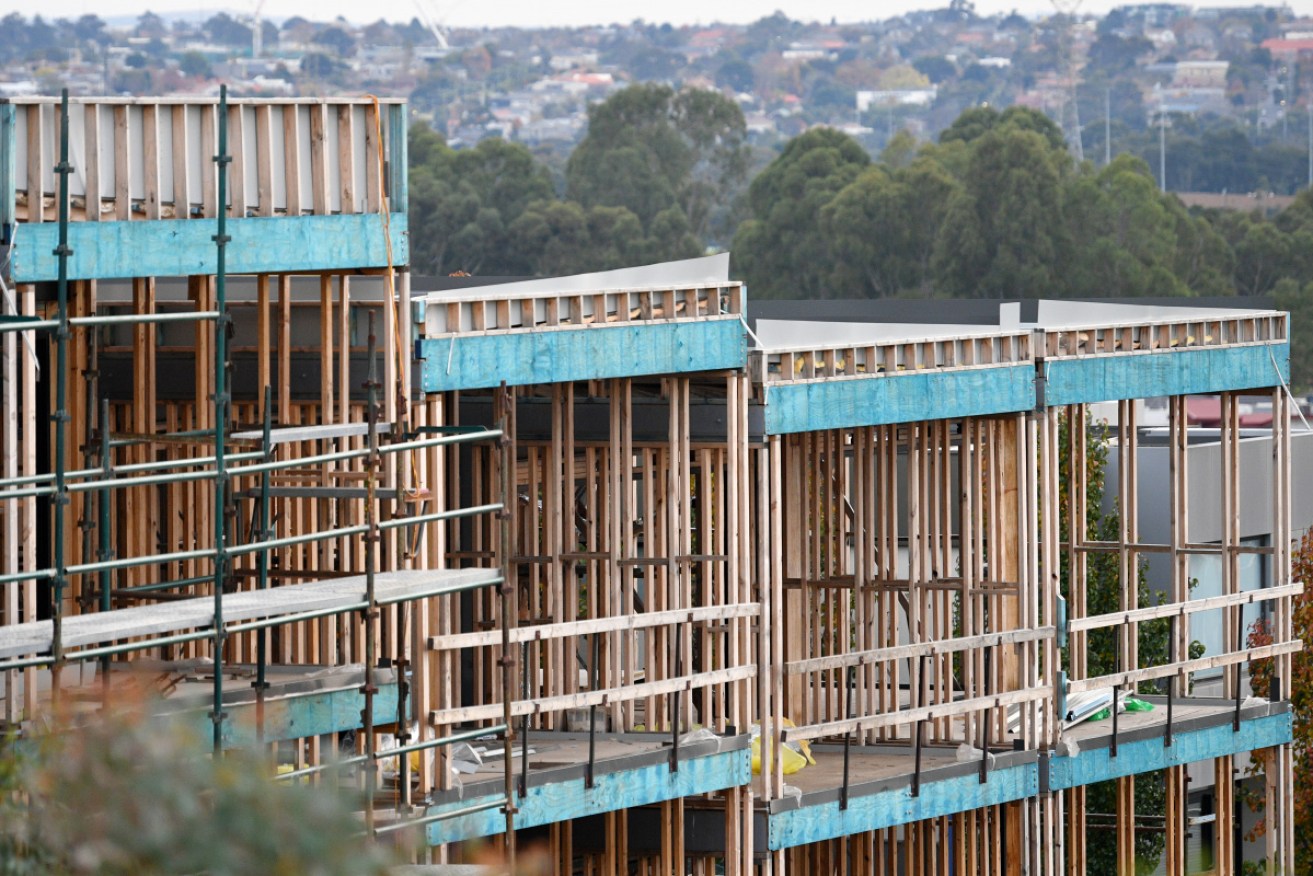Construction rebounding after lockdowns


The value of owner-occupier housing loan commitments rose 2.1 per cent to $21.18 billion in May. Photo: AAP
Australia’s construction industry is showing signs of a strong recovery after being hit by the lengthy coronavirus lockdowns in NSW and Victoria.
The Australian Industry Group-Housing Industry Association performance of contraction index increased by 4.3 per cent to 57.6 in October, comfortably above the 50-point mark that separates expansion from contraction.
“The healthy leap in activity levels across the Australian construction sector in October is a taste of what is expected to be a strong rebound for the broader economy over the next few months,” Ai Group chief policy advisor Peter Burn said.
He said a high volume of new orders in October added to the already healthy pipeline of building and construction activity and will further stretch capacity limits and re-expose underlying shortages of skilled labour in many occupations over coming months.
“The current building and construction pipeline is unlikely to be affected by yesterday’s bring-forward of expectations of interest rate rises by the Reserve Bank although there may be some recalibration of the medium-term outlook in coming weeks,” Dr Burn said.
Reserve Bank of Australia governor Philip Lowe said an earlier hike in the cash rate is now “possible” after having a long-held view that it would remain unchanged until 2024.
The central bank board left the cash rate at a record low 0.1 per cent at Tuesday’s monthly meeting.
But it ditched its three-year bond yield target that was introduced at the height of the pandemic last year and aimed at keeping market interest rates in line with the cash rate.
“The decision to discontinue the yield target reflects the improvement in the economy and the earlier-than-expected progress towards the inflation target,” Dr Lowe said.
Financial markets and some economists have been speculating on a possible rate rise as early as next year following last week’s inflation data showed the underlying measure had jumped to 2.1 per cent.
This was the strongest result in six years and took the rate to within the RBA’s two to three per cent inflation target.
Dr Lowe thought this was a “complete overreaction” by the markets to the inflation data.
“I’m not sure how we would get to that state of the world and be in a position to raise rates early in the new year. I still struggle with the scenario that rates would need to be raised next year,” Dr Lowe told a rare post-meeting webinar..
The bank’s latest forecast is that underlying inflation will be no higher than 2.5 per cent at the end of 2023.
Meanwhile, the Australian Bureau of Statistics will release building approvals figures for September on Wednesday.
Economists expect home building approvals to have declined in September after an unexpected 6.8 per cent surge in August.
Their forecasts point to a two per cent fall in September due to the unwinding impact from federal government HomeBuilder grants scheme and disruptions from COVID-19 lockdowns.
– AAP








